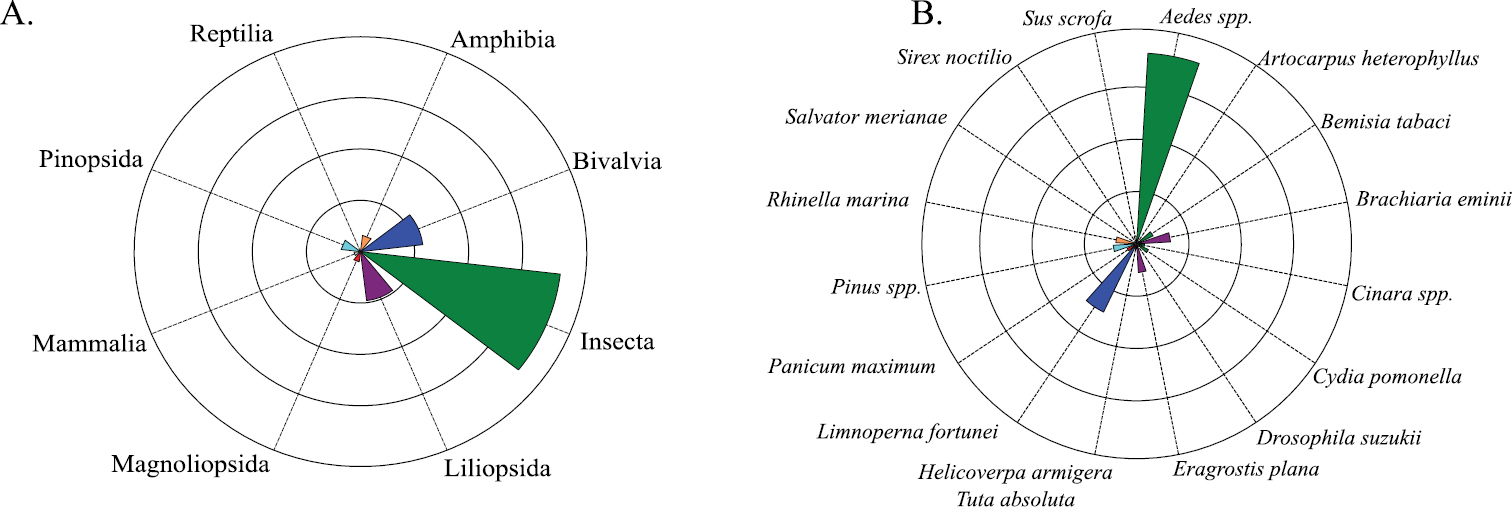
|
||
|
Radar plot showing the frequency of invasive taxonomic classes (A) and invasive alien species (B) distributed across different ecosystem types. Overrepresented species were: Aedes spp. (N = 73), Limnoperna fortunei (N = 29), Brachiaria eminii (N = 13) and Eragrostis plana (N = 11). Species with intermediate representativeness were Pinus spp. (N = 9), Rhinella marina (N = 8), Bemisia tabaci (N=7) and Cydia pomonella (N=5). The remaining species were underrepresented (N < 5). The overrepresented taxonomic classes were Insecta (N =93), Bivalvia (N=29) and Liliopsida (N=24), whereas the remaining ones were underrepresented (N <10). |